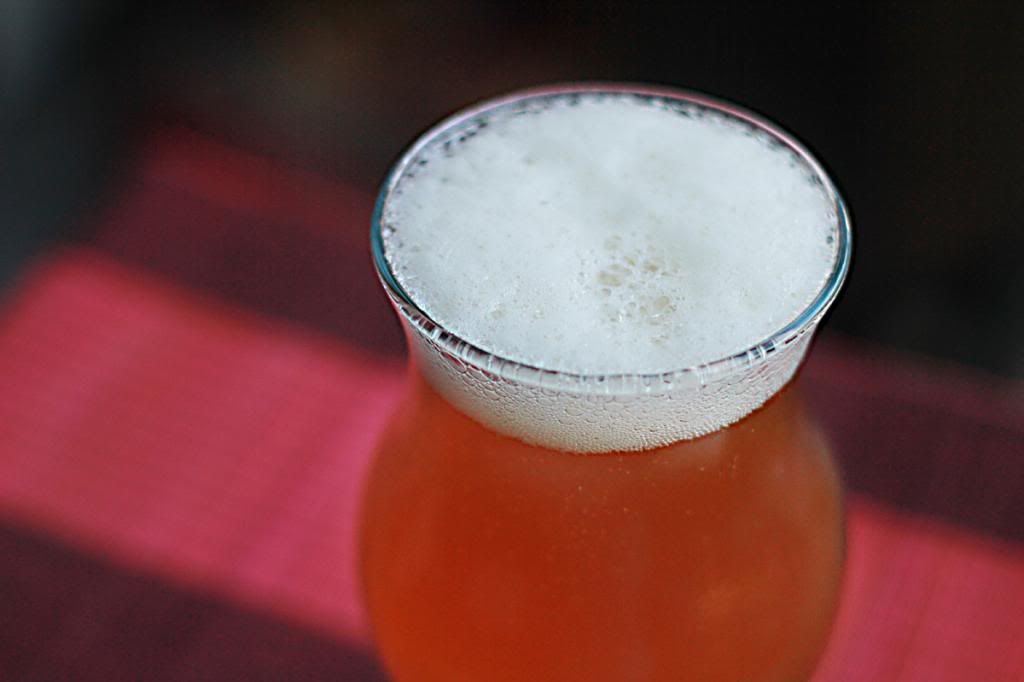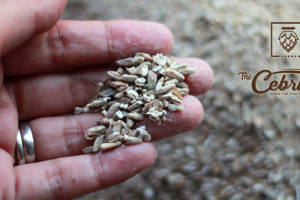
What’s better than a nice, crisp, cold beer after a long hot day outside? For years, marketing and advertising have shown us happy, responsible beer drinkers, drinking pale, golden-hued beers from frosted mugs and ice-chilled long neck bottles, and the expectations and practices of customers and restaurants have followed suit. Go in to many restaurants and order a beer, and your bottle will come out of a 1 or 2 degree Celsius freezer, or your draught will be served in a frozen pint glass from a keg held in a refrigerator at about the same temperature. Some bars even advertise that they serve “the coldest beer in town!” What a great way to enjoy a beer, right?
Well, half-right. Macrobreweries want you to believe that all beer has to be served at this temperature, barely above the freezing point of water. Why? The sensation of coldness inhibits the tongue’s taste receptors – at this temperature, it’s not only easy to disguise the relative lack of flavors in their beer, but also easier to hide the less desirable off-notes caused by using large amount of cheap fermentable additives like malted rice and corn.
These beers are designed to taste their best at this temperature, and serving them warmer brings in to sharp relief the lack of depth and character that these beers often have. If you don’t want to actually taste something – i.e., if you’re just looking for an alcohol delivery system – go ahead and serve it at this temperature.
On the other hand, craft beer suffers when served at these very low, low temperatures. The nuances of the base malts, the flavor compounds imparted by the hops, and the desirable compounds produced by the yeast during fermentation are all very difficult to detect at such temperatures, and the way they support and enhance one another is what makes drinking a craft beer such an enjoyable experience. An artisan beer is more than just an alcohol delivery system – it’s a careful and intentional combination of flavors and aromas, and the alcohol is just a happy byproduct of the process that creates them. High quality ingredients, no cheap adjuncts, and careful fermentation control also mean that our beer is more tolerant of higher temperatures – we’re not trying to hide anything from our customers!
Beer should be stored at cellar temperature – that is, 12 to 14 degrees Celsius or so. Many craft beers – include those we produce here at the Cebruery – are not pasteurized, and are bottled live with yeast. Storing beer at the proper temperature before serving will ensure that the yeast produce minimal off flavors, as well as reduce the likelihood of chemical reactions with oxygen and light that lead to undesirable flavor compounds.

Beer should be served at a temperature and in a glass appropriate to its style. Though we’ll go in to the latter (glassware) in a later article, getting the former right is easy. If it’s on the lighter side of the craft beer spectrum – a Hefewiezen, Kölsch, Pilsner, or Berliner Weissbier – 5 degrees is a good rule of thumb. If it’s one of your more moderately hued and bodied craft beers – your Pale Ales, IPAs, Porters, Saisons, Weizenbocks, Scotch Ales, or Belgian Dubbels or Tripels – 12 degrees is closer to where you want to be. And for your biggest beers – Barleywines, Imperial Stouts, Quadrupels, Double IPAs, and Eisbocks – you actually want to be most of the way to room temperature, say around 15 degrees C. Essentially, the more heavily flavored it is, the higher in alcohol it is, and the less carbonated it will still be enjoyable at (because the saturation point of carbon dioxide in beer is inversely related to temperature), the more it will benefit from being served warmer. In practice, this means chilling your beers down to refrigerator temperatures when you want to serve them, and then letting them sit at room temperature for different periods of time prior to serving to allow them to reach the temperatures above – less time for those beers you want to drink colder, and more time for those beers you want to allow to warm more prior to serving.
Also in practice, it means never using frosted glasses. Ever. Just don’t do it. Go to your freezer and take those frosted glasses out and stick them back in the cabinet. Go on – I’ll wait. While you’re doing that, let me explain – frozen glasses result in ice crystals (duh, right) that can cause foaming problems, kill head retention, disrupt aromatic quality, and likely disrupt that whole elaborate routine above where you’ve allowed your recently refrigerated beer to warm to just the right temperature before you pour it. The ideal glass for serving your beer in will be one that’s not only stylistically appropriate, but also one that’s at room temperature or just slightly below. The thermal mass of a room temperature glass will raise the temperature of your beer between 1 and 3 degrees Celsius, so the impact is negligible (or, if you felt so inclined, can be accounted for) on the final temperature of the beer.


Take our Boracay Blonde, for example. Blonde ales are a style characterized by balance – they should always be smooth and easy to drink beer, with a clean fermentation profile and just a touch of malt character. Held to the light, they should appear light yellow to deep gold in color and brilliant in clarity. A hint of fruitiness is acceptable, and hop character is generally restrained and moderate, as is the alcohol level (3.8 to 5.5% ABV). Any slight residual sweetness should be offset with just enough hop bitterness and body to keep things balanced, and the end result should never be heavy nor overly dry or thin.
True to style, our Boracay Blonde recipe calls for the addition of small amounts of very slightly kilned Vienna and delicate, lightly roasted 15L Crystal malt to a largely pilsner malt base – these additions add not only a small amount of color, but also hints of caramelized and toasty sugars that would be completely imperceptible to any drinker if the beer was consumed any colder than its intended 5 degrees C serving temperature. A duet of American “C” hops provides a perfect amount of balancing bitterness and flourishes of grapefruit, spruce, and floral notes that, sure, may be detectable below this temperature … but really blossom as they begin to volatilize from your glass at and above it. The same thing goes for the fruity and spicy esters produced by the English Ale yeast we selected to ferment the Boracay; we’ve even adjusted the salt and mineral content of our brewing water to augment certain flavors over others. Our suggested serving temperature is the perfect balance between keeping the beer cool and refreshing (the amount of carbon dioxide present in this beer at 5 degrees makes for a light, crisp, and bright drinking experience) while also enabling all of the various delicately balanced nuances to shine through.

The take away from all of this? If you’re just looking to get drunk, you can probably do it cheaper than on craft beer. On the other hand, if you’re looking to enjoy a handcrafted, fully realized craft beer, remember that we—and other artisan brewers—try hard to cut no corners and use every tool in our toolbox to get the perfect combination of flavor compounds and notes in to this and other beers that we produce. And when those beers are served at a temperature that leaves your tongue too numb to enjoy 95% of the flavors present … well, you’ve essentially just gone and wasted 95% of your money. We respect you enough and have enough faith in our product to recommend that you not do that.
So pick up a case of our Boracay Blonde next time you’re looking for refreshing beer to keep tucked away in the fridge as a reward for a hard day’s work – who says a beer can’t be refreshing and incredibly flavorful at the same time?






